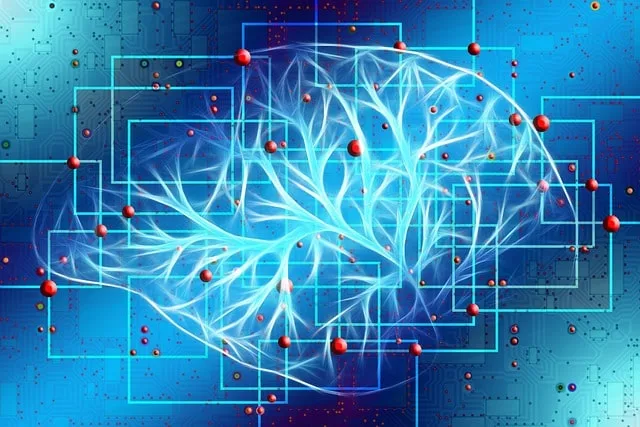
The GAN Discriminator: Role of the Adversary
GAN discriminator is responsible for evaluating the authenticity of data samples, which the generator network produces. Thus, making it an essential element of the GAN architecture.
Additionally, developing a thorough understanding of it is critical for those involved in artificial intelligence and machine learning.
This knowledge will allow them to design, train, and optimize GANs more effectively. Therefore, leading them to have better performance and more accurate data generation for various tasks and applications.
GAN Architecture Overview
Key Components of GANs
Generative Adversarial Networks (GANs) consist of two primary components:
- the generator network, and
- the discriminator network
Furthermore, these work together in an adversarial training process, aiming to improve each other’s performance.
The Adversarial Training Process
During the training process, the generator creates synthetic data samples, while the discriminator evaluates their authenticity.
Additionally, the generator strives to create data samples that are indistinguishable from real data.
While on the other hand, the discriminator aims to correctly identify whether a sample is real or generated.
Ultimately, this competition drives the generator to refine its data generation capabilities continually.
The Role of the Discriminator Network
The discriminator network plays a critical role in GANs by checking whether the data is generated or real.
Therefore, the quality of the generated data depends on the discriminator’s ability to accurately distinguish data and also guide the generator’s learning process.
The GAN Discriminator Network
GAN Discriminator Architecture
The GAN discriminator typically consists of multiple layers, including input, hidden layers, and output.
Furthermore, the input is the data sample, either real or generated, which goes through hidden layers that consist of convolutional or fully connected layers.
And lastly, the output layer is responsible for providing a scalar value indicating the likelihood of the input sample being real.
Activation Functions and Normalization Techniques
Activation functions and normalization techniques play a significant role in the performance of the GAN discriminator.
Common activation functions in discriminator networks include:
- Rectified Linear Unit (ReLU)
- Leaky ReLU
- Sigmoid
And common normalization techniques are:
- Batch Normalization
- Layer Normalization
Additionally, we can use these to improve training stability and convergence speed by mitigating issues like vanishing gradients and internal covariate shift.
Impact of the Discriminator Performance on GAN Training
The performance of the discriminator directly affects the overall GAN training and stability.
To clarify, a discriminator that is too strong or too weak can lead to training instability or mode collapse. Thus, resulting in poor-quality generated data.
Furthermore, striking a balance between the generator and discriminator performance is crucial for effective GAN training.
Discriminator Optimization and Challenges
Objective Functions and Loss Functions of a GAN discriminator
The optimization of the discriminator network is guided by objective and loss functions. In addition, these quantify the discriminator’s ability to distinguish real data from generated data.
Common loss functions for GAN discriminators include the adversarial loss, least squares loss, and Wasserstein loss.
Addressing Common Challenges
GAN discriminators also face several challenges during training, such as mode collapse and training instability.
Mode collapse occurs when the generator produces a limited variety of data samples, failing to cover the full spectrum of the real data distribution. In order to address it we can use techniques such as minibatch discrimination, unrolled GANs, and gradient penalty regularization.
Furthermore, we can mitigate training instability by employing normalization techniques, using alternative activation functions, or adopting different loss functions.
Strategies for Improving GAN Discriminator Performance and Stability
To enhance the performance and stability of GAN discriminators, researchers employ various strategies such as:
- Spectral normalization: Constraining the Lipschitz constant of the discriminator network to ensure stable training and avoid mode collapse.
- Gradient penalty: Regularizing the discriminator’s gradients to improve the stability of the training process and encourage convergence.
- Conditional GANs: Conditioning the discriminator on additional information, such as class labels or other metadata, to guide the evaluation of generated samples and improve the quality and diversity of the data.
- Progressive growing of GANs: Gradually increasing the resolution of the generated samples by adding new layers to the discriminator and generator networks during training. This approach allows for more stable training and higher-quality results.
Advanced GAN Discriminator Architectures
Deep Convolutional GANs (DCGANs)
DCGANs employ deep convolutional layers in both the generator and discriminator networks.
Additionally, the discriminator architecture in DCGANs consists of several convolutional layers with batch normalization and Leaky ReLU activations.
Last layer is a fully connected output layer with a sigmoid activation function.
Wasserstein GAN (WGAN)
WGAN introduces a new loss function, the Wasserstein loss, which significantly improves the stability of the training process and the quality of the generated samples.
Furthermore, it’s discriminator, which we also call a critic, is optimized using the Wasserstein loss and constrained by a gradient penalty term.
Conditional GANs (cGANs)
In Conditional GANs, both the generator and the discriminator are conditioned on additional information, such as class labels.
In addition, this helps guide the discriminator’s evaluation of generated samples and leads to improved generation quality and diversity.
Self-Attention GANs (SAGANs)
SAGANs incorporate self-attention mechanisms into the discriminator architecture. Thus, allowing the network to model long-range dependencies and evaluate the coherence of the generated samples more effectively.
Furthermore, this approach can lead to improved discrimination performance and also higher-quality data generation.
Conclusion
In summary, we have explored the GAN discriminator, its role in the GAN framework, and its impact on the overall training and stability of GANs.
We also discussed the architecture of the discriminator network, including the importance of activation functions and normalization techniques.
Additionally, we delved into the optimization of the discriminator, addressing common challenges and strategies to improve its performance.


